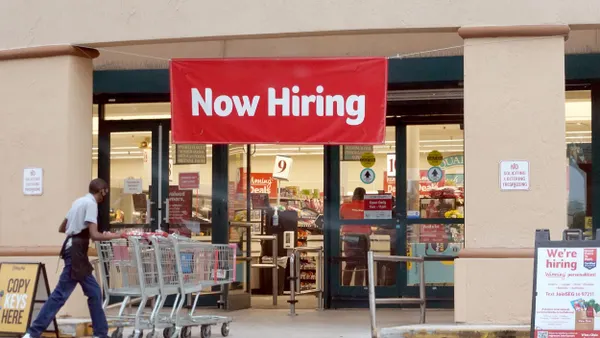Dive Brief:
- The skills shortage could create conditions that, if not addressed, could severely impede growth of the U.S. market by 2030, a new Korn Ferry study says. According to the Global Talent Crunch, the current talent shortage in the U.S. could create 85.2 million unfilled jobs and nearly $8.5 trillion in unrealized revenue — a "potential talent crisis," Alan Guarino, vice chairman, Korn Ferry CEO and Board Services, said in a statement.
- In other key findings, the study says the U.S. financial and business services sector could see a shortage of 10.7 million workers by 2030, causing potential revenue losses of $1.3 trillion if not addressed.
- The U.S. is among the countries that will be hardest hit by talent loss. Along with Australia, France, Germany and Japan, the five countries could face a combined opportunity cost of near $1.9 trillion in annual revenue by 2020 alone.
Dive Insight:
The Korn Ferry study constructs a sobering picture of the skills gap and its dire consequences for the U.S. and global economies if employers simply standby. If the talent gap will stall growth in the markets as predicted, employers will need to act quickly to shore up talent pipelines and ensure that gap's closure.
The study points to an opportunity for employers to begin preparing workers for the future of work through training, upskilling and retooling of skills. Technology alone won't save employers; businesses have to take "collective action" to help employees develop the right mix of soft and technical skills to fill open jobs and prepare workers for the future of work, Becky Frankiewicz, President of ManpowerGroup North America, previously told HR Dive. But despite the known positives of such investment, a Randstad Sourceright study shows that only 51% of employers are investing in addressing the skills gap through on-site benefits and innovative technologies.
The contingent workforce has emerged as a sort of stop-gap solution for this issue, but employers that fail to adapt their processes for that workforce may find themselves behind their competitors. Agility will be key — but HR must first understand what that may entail.












